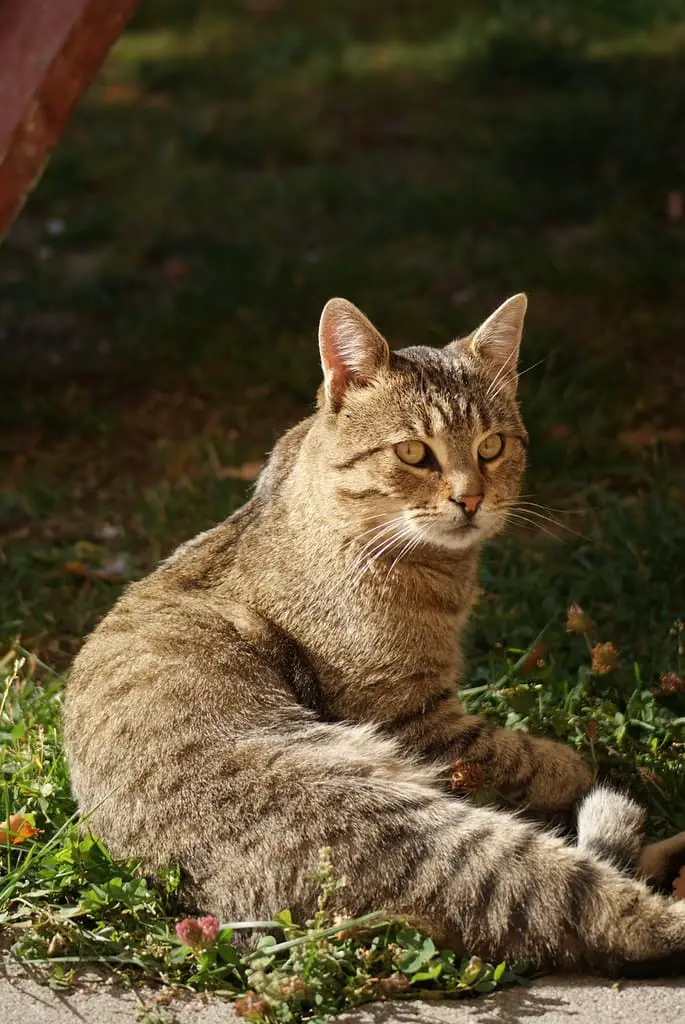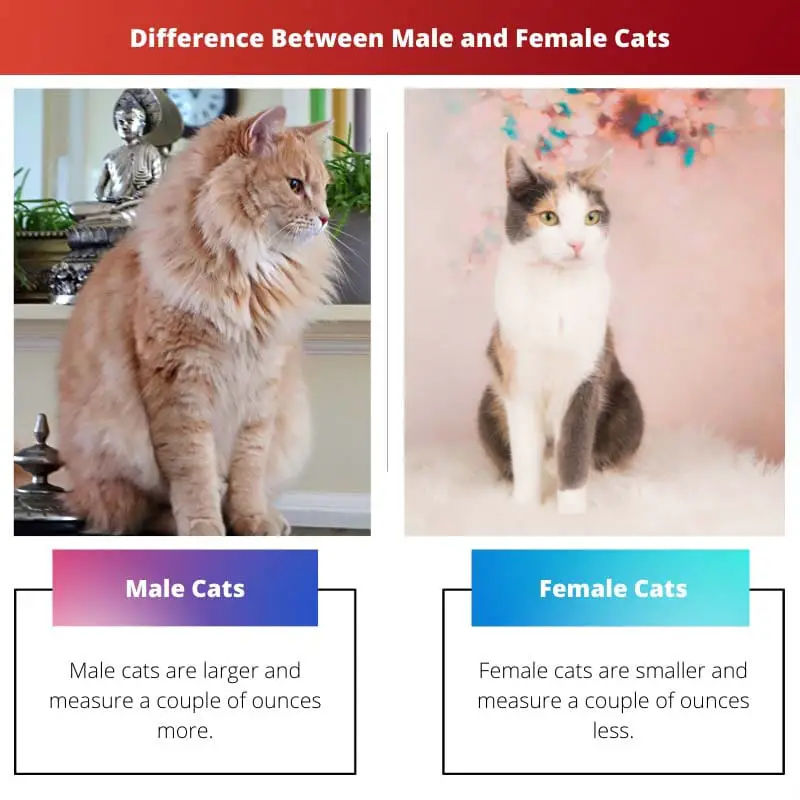A cat, known as a household cat or domesticated cat, is the Felidae group’s youngest animal in the Carnivora category.
Domesticated cats, like other felids, have flexible low-slung physiques, beautifully shaped heads, lengthy tails that help in balancing, and specialized fangs and paws that lend themselves wonderfully to a lifestyle of aggressive predation.
Key Takeaways
- Male cats tend to be larger and more muscular than female cats, which are smaller and more delicate in appearance.
- Female cats display more nurturing and maternal behaviors, while males are more territorial and prone to spraying.
- Male cats are more friendly and playful, while female cats can be more independent and reserved.
Male vs Female Cats
Male cats are larger and more muscular than females, they tend to roam and may exhibit more aggressive behavior, especially toward other males. Females are more affectionate and have a tendency to be more territorial.

Male cats are widely recognized as ‘tomcats,’ or male felines who are eager to procreate. If the cat is sterilized, it is referred to as a ‘gib.’
Male cats kept for mating requirements are referred to as ‘sires,’ as they will continue to father offspring for the majority of their lives.
When referring to a female cat, three alternative phrases might be used, Molly, Queen, and Dam are their names. Those are female cat titles that are rarely as well-known as their male equivalents.
While you may refer to your female cat as a Molly, there are a few crucial variances in when you can use any of these nicknames on a female cat.
Comparison Table
| Parameters of Comparison | Male Cats | Female Cats |
|---|---|---|
| Lifespan | Male cats tend to live a bit lesser than female cats. | Female cats tend to live a bit longer than male cats. |
| Size | Male cats are larger and measure a couple of ounces more. | Female cats are smaller and measure a couple of ounces less. |
| Territorial Conduct | The male cat will establish its domain and protect its house and the neighboring region. | Females are significantly more likely to share their house and environment, as well as the people that live in it. |
| Disposition | Male cats can concentrate completely on satisfying their pet guardians. | Female cats are more naturally inclined to care for offspring. |
| Names | Tomcats, gib, tabby is their name. | Molly, queen, dam is their name. |
What Is A Male Cat?
Male cats can exhibit undesirable habits such as pee splashing and reacting to females in love. This is more common in desexed males, and neutering them can assist with these habits.
An adult tomcat has powerful genetic drives to defend his area and locate a partner, which might culminate in anti-social behavior.
The behavior of pee splashing is perhaps the most serious transgression ascribed to male cats. Males spray their turf to notify other creatures of their borders.
When looking for females to pair with, Toms will spritz to promote their sexual attractiveness. A nervous cat may also shower to calm itself by disseminating its fragrance.
Tom’s proclivity for roaming is among their greatest notable characteristics. This restlessness can take them miles away from home, and you may not even see your cat for weeks.
In most cases, your tom will casually come home seeking his supper, but it doesn’t stop you from being concerned in the meanwhile.
Fighting is not exclusively a male habit, although males appear to attract the most emphasis for engaging in skirmishes with the other toms they meet.
This is primarily motivated by a need to protect or obtain turf, although sexual behavior also pushes males to fight with one another.

What Is A Female Cat?
Molly is the name of a female cat. The history of this title, meanwhile, is mainly unknown. Female cats are referred to be Queens when they are expecting and preparing to give delivery to their offspring.
Aside from being well-deserved and appropriate for a picky species like the female cat, the term is originated from the cat’s reproductive procedure described as “queening.”
The term “queen” derives from the ancient English “cwen,” which denoted a female monarch, a spouse, or an exalted lady. Female cats are not just picky but also matrilineal, therefore the producers humorously alluded to the female cats as queens.
Furthermore, in wild cat communities or multi-cat homes, elderly female cats were more dominant than males of the same age.
And men naturally yield to females, affording them more availability to nourishment. A female cat in love, or any cat for that matter, may not be the most interesting pet to keep.
Their attention-seeking tendencies can be vexingly constant. Enabling a cat in love to procreate may temporarily stop the habit.
And, until you’re equipped, you’ll need to contend with much more cats as a result of the birth, and they will also go into heat while you’re watching.

Main Differences Between Male and Female Cats
- The lifespan of a male cat tends to be a bit lesser compared to the lifespan of a female cat.
- Male cats are a bit bigger and weigh a bit more than female cats.
- Female cats tend to share their home and living space, whereas males are very territorial and will do anything to protect their domain.
- Male cats love their owners completely, whereas female cats are more inclined to love their kittens more.
- Tiny testicles are situated underneath the anus in male cats, and the penis is situated below them whereas the anal and vulva openings of female cats are tied together and represent the symbol ‘i’.




